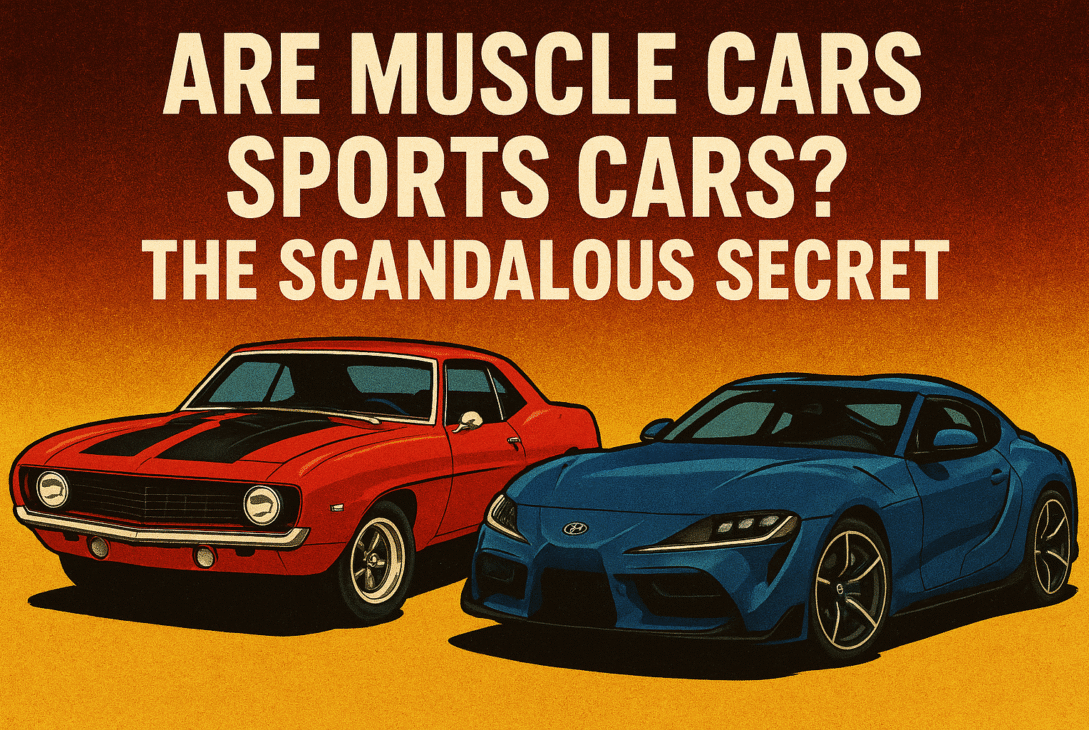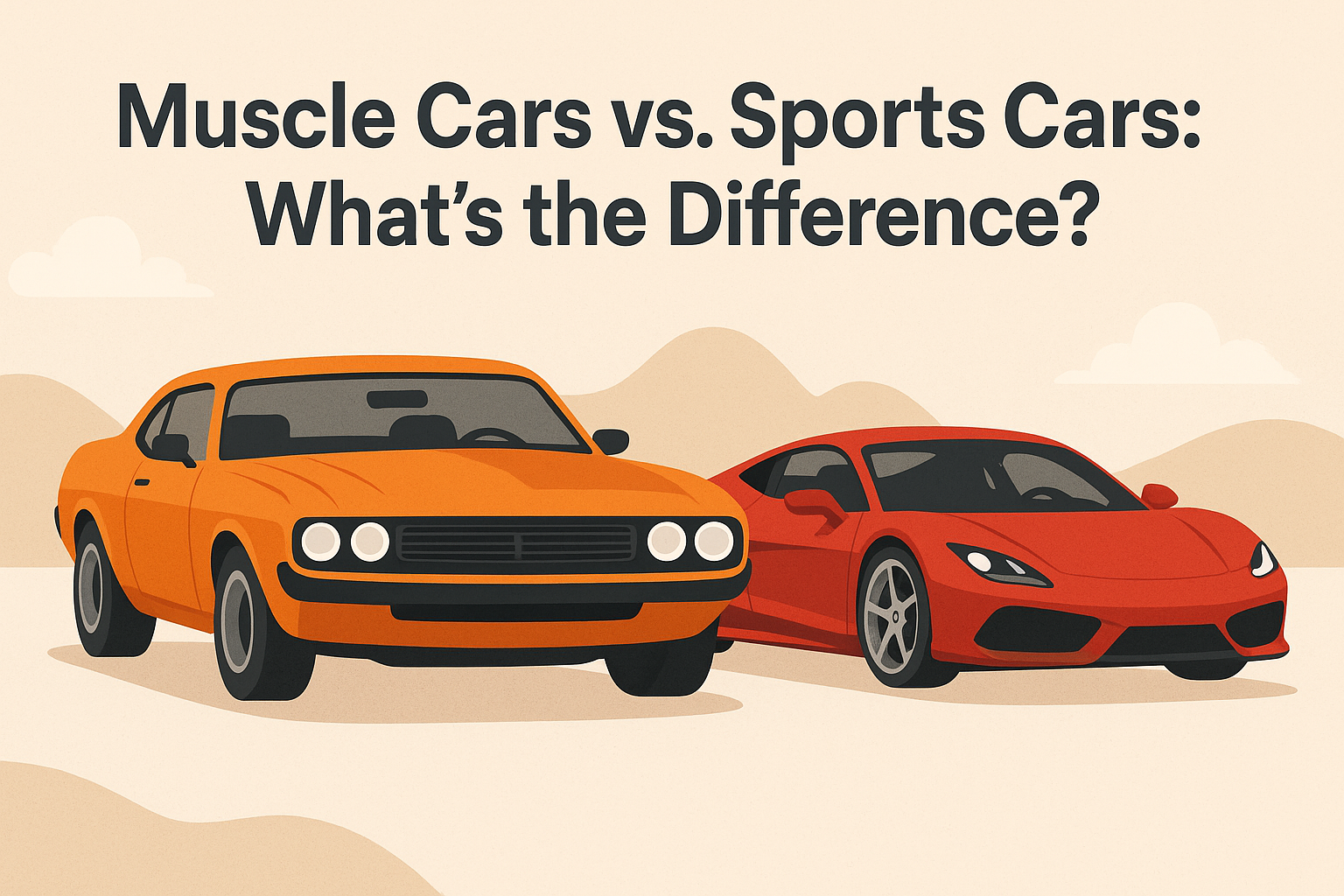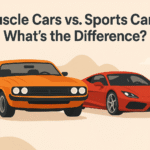There is no shame in arguing over whether a Mustang or Camaro is to be considered a sports car in a parking lot meet because this is a predictable and regular investigation. The question “Are Muscle Cars Sports Cars?” keeps coming up because modern performance machines blur lines that were once bold and bright. To a JDM enthusiast who values a lightweight balance and tight chassis tuning, the contrasts are fascinating, and overlap is increasingly becoming significant with each generation that comes.
In the example below, we will dissect how each type has developed, what each is mechanically, and why some vehicles do not fit precisely in a single category. You can then depart with a straightforward method to determine, within a specific model year or trim, whether a so-called muscle car performs as a sports car.
Rapid Definitions (and Why They are Hairy)
Sports car: Historically, a lightweight, fast, and maneuverable, driver-focused machine optimized to bend corners quickly, and provide driver participation. Consider the Mazda MX-5 Miata, Porsche 718/911, Toyota GR86, Nissan Z, and JDM legends of the Honda S2000 and the Mazda RX-7. Power is necessary, but more critical are balance and feedback. On a more mainstream analysis of the way industry talks about sports cars, see this summary of Car and Driver.
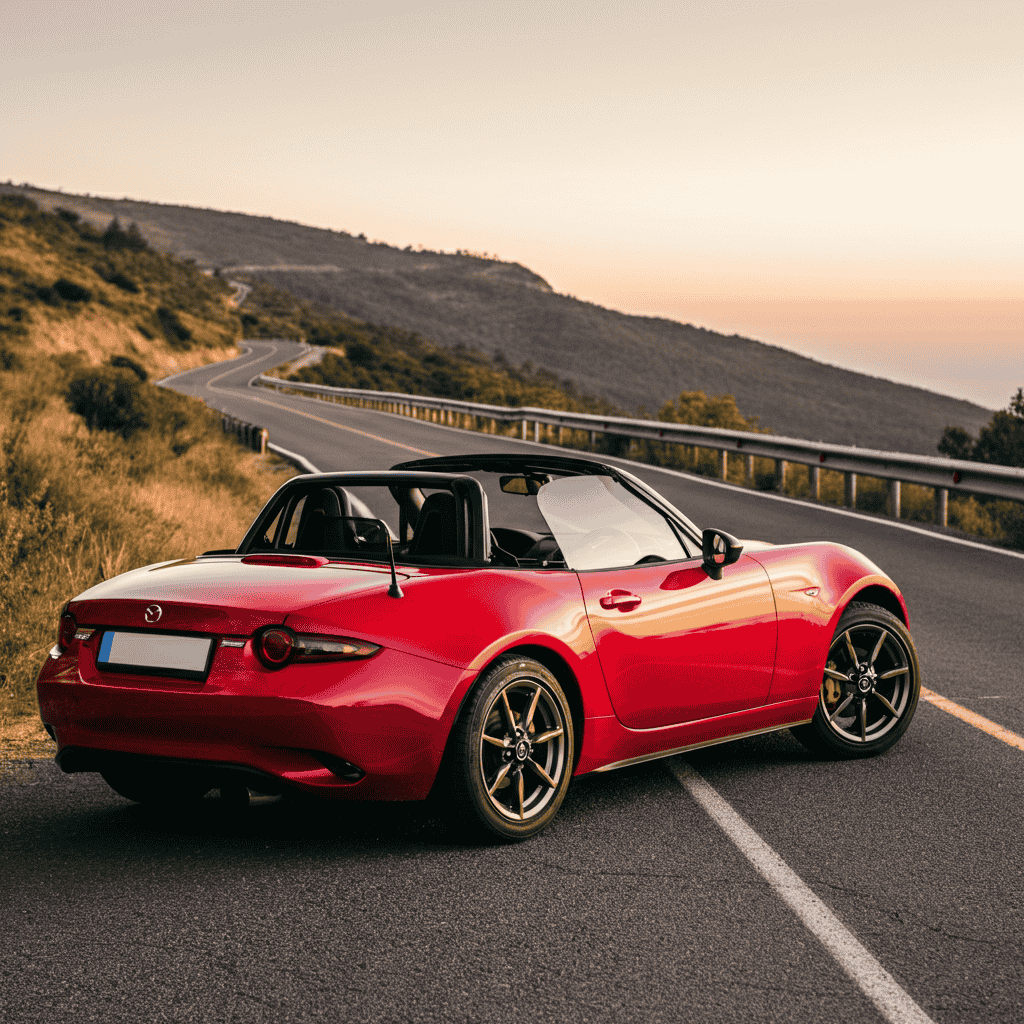
Muscle car: a mid- to full-size, large-displacement, front-engine, rear-drive coupe (or sedan) emphasizing straight-line speed and ease of acceleration. Traditional models are the Dodge Charger, Pontiac GTO, and early Chevelle SS. Many an example of a pony car, such as the Ford Mustang and Chevy Camaro, gained the reputation of being lumped in with the muscle, but they started smaller and sportier than their older brothers. An excellent explainer can be found by Hagerty, and his debate on history and definition is rather well-researched.
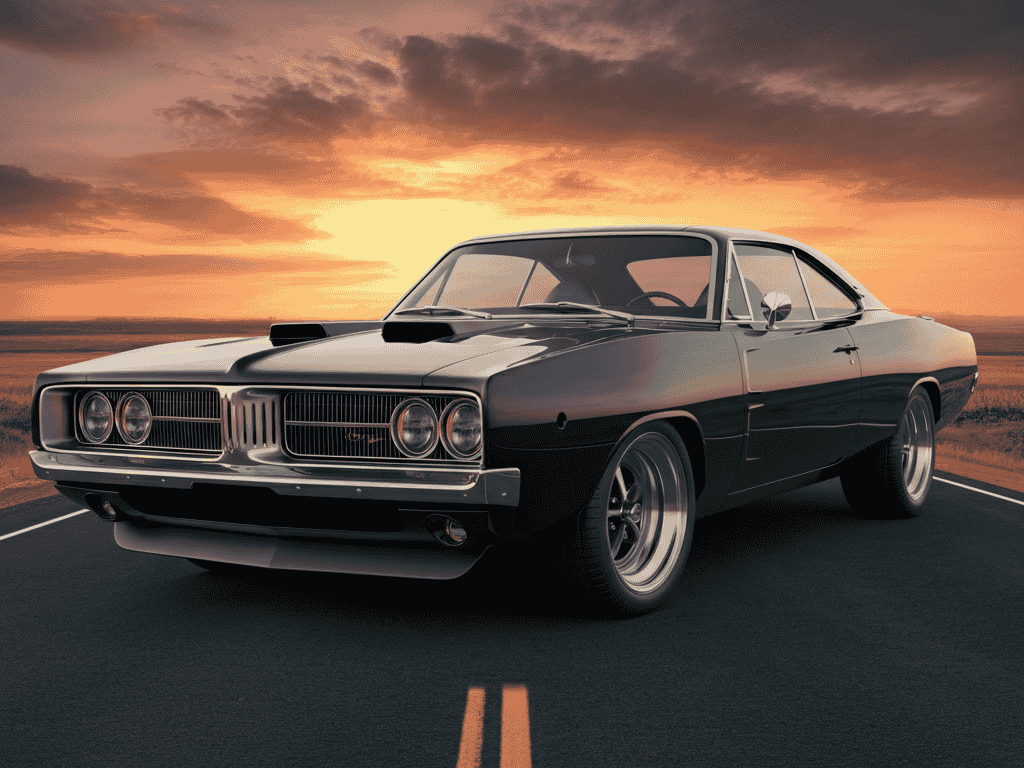
Hagerty: What is a muscle Car?
So, Are Muscle Cars Sports Cars? Not in the classic definition. However, modern times make it more complicated. Suspension technology, rubber compounds, weight control, braking, and electronics have turned many so-called muscle nameplates into monsters at the track day. The surroundings count- trim level and setup in particular.
How We Got Here: A Tale of Two Philosophies
Sports Cars: Light Is Right School
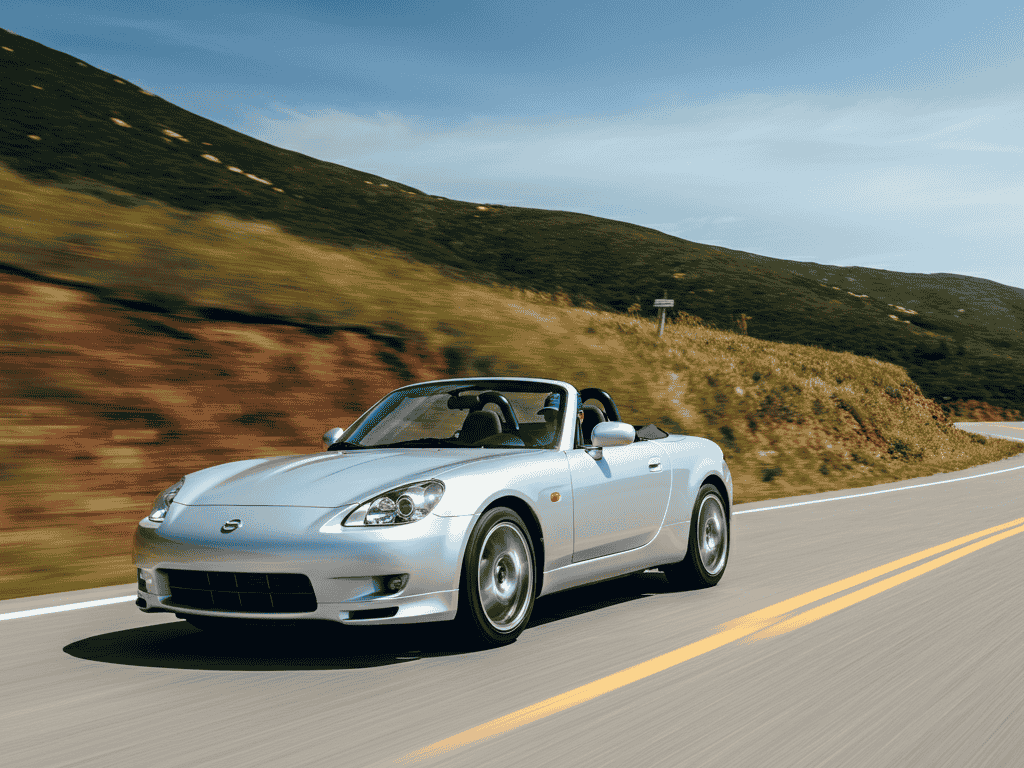
The JDM culture glorifies the power-to-weight and chassis balance. Cars such as the AE86, S2000, RX-7 FD, Silvia/180SX, and the R32-R34 Skyline GT-R attained cult status as not only being fast, but also having exceptional feel through the steering, weight distribution, and manageability on narrow touge roads or other technical circuits. The formula adores:
- Low and medium curb weight
- Neutral equilibrium (usually something close to 50:50)
- Naturally aspirated or turbocharged high-revving engines that respond crisply
- Accurate steering and excellent, consistent brakes
- Grip and communicable suspension
Big Cubes-Big Sound-Big Straights: Muscle Cars
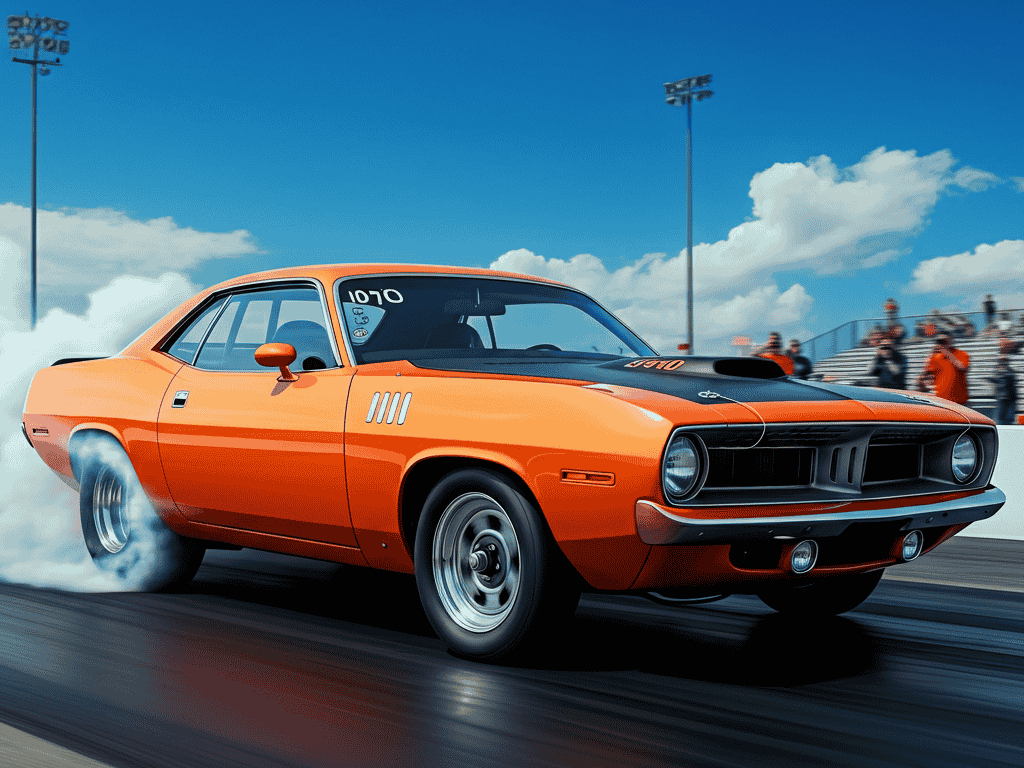
American muscle would historically bow down to torque and 1/4 mile bragging rights. The appeal is physical; big soundtrack, V8, long hood, and it scoops you in the rear end, trying you out. Priority was given to the classic muscle:
- High torque, low RPM, significant displacement
- The straight-line acceleration dominance
- Drivetrains stout enough to handle abuse
- Exciting HAIRDRESSING and looks
The key thing here is that, as much as sports cars had more optimisation on change of direction, muscle cars had more optimisation of the rate of acceleration. That philosophical divide steered years of opposite engineering.
Spec Sheet: What is the Reality of answer “Are Muscle Cars Sports Cars?”
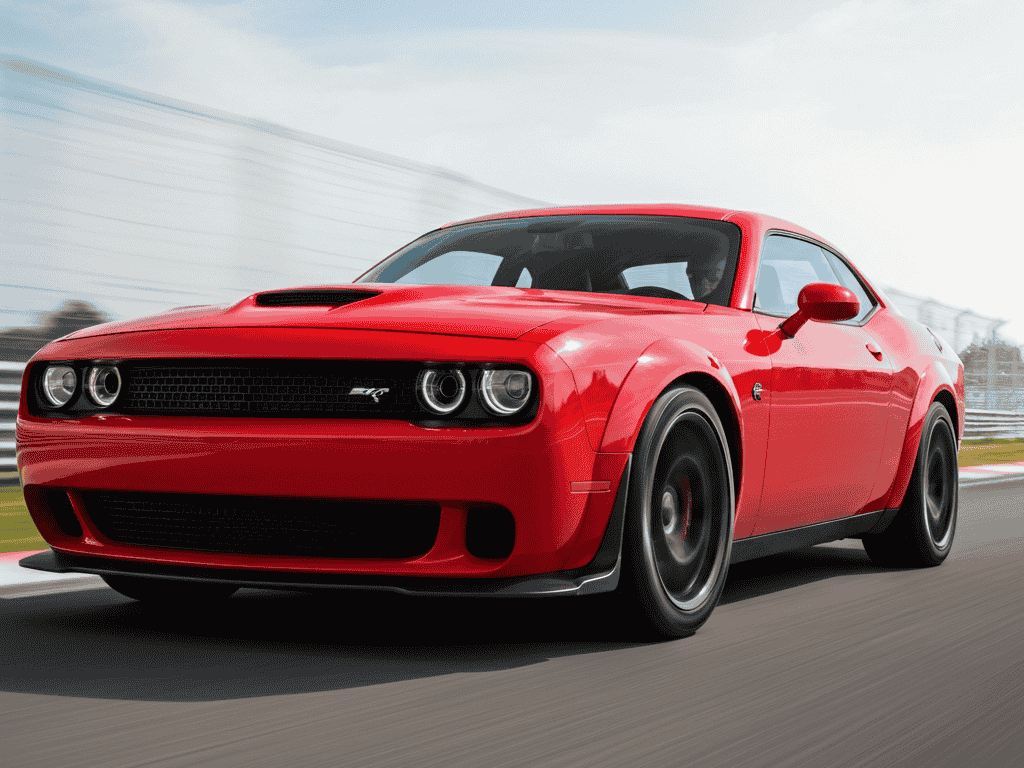
To answer “Are Muscle Cars Sports Cars?” in practice, look beyond badges and marketing. Review these basics:
1) Weight & Distribution
Sports cars are designed to have less mass and an almost balanced weight distribution, which reduces inertia and increases rotation.
Muscle cars are naturally heavier in general and heavier over the front axle (big iron blocks, large bodies).
Twist in modernity: Aluminum blocks, composite panels, and sharing platforms have bridged differences. Lighter wheels, carbon-ceramic brakes, and even rear-seat deletes on performance trims move a few of the so-called muscle cars toward the sports car zone.
2) Chassis /Suspension
Sports cars: The chassis is rigid, the back wheelbase is short, the rear suspension design is double-wishbone/multilink (in some cases), and the vehicle geometry is set up with mid-corner stability and steering feedback in mind.
Muscle cars: Traditionally, more basic suspensions (Even live rear axles on early models) were all about traction off the line.
Twist of modernity: In modern use, independent suspensions at the rear (IRS) have become widespread on American performance coupe cars, changing the transient behavior and the mid-corner composure. Put in adjustable dampers, stiffer bushings, and track packs, and the handling paradigm changes.
3) Steering & Brakes
Sports cars are focused on linear steer, on-center feel, and big-brake endurance to repeat the laps.
The early muscle cars were focused on straight-line stability and “big stop once” brakes.
Contemporary gimmick: Expensive Brake cooling, like Brembo systems found in many high-line Bavarians and other cars, as well as highly developed ABS /ESC tuning and programming, have given even the modern muscle cars with the labels a durability that has never existed before.
4) Power delivery
Sports car: Smaller displacement and higher revs, more closely spaced gears are common; precise build-up of power characterizes sports cars.
Muscle cars: Boatloads of torque at the low end; mindless acceleration.
Twist of the modern era: Turbo and supercharging complicate the matter. Sports engines of today have the ability to produce muscle torque-like qualities, and some of the muscle trims respond to throttle mapping that feels like a scalpel.
5) Tires & Aerodynamics
Racing cars take advantage of underbody control and the downforce generated to maintain staggered tires under high side (lateral) loads.
In the case of muscle cars, it used to be based on plump rear tires to gain traction on a launch.
Twist modern: On performance road track versions of otherwise more traditionally muscle-expressed vehicles, you will find efficient splitters, diffusers, and aggressive tire sets (200-300 treadwear). And with that comes a steering performance that is truly sports-car-like in quality.
The Edge Cases: Categories Collide
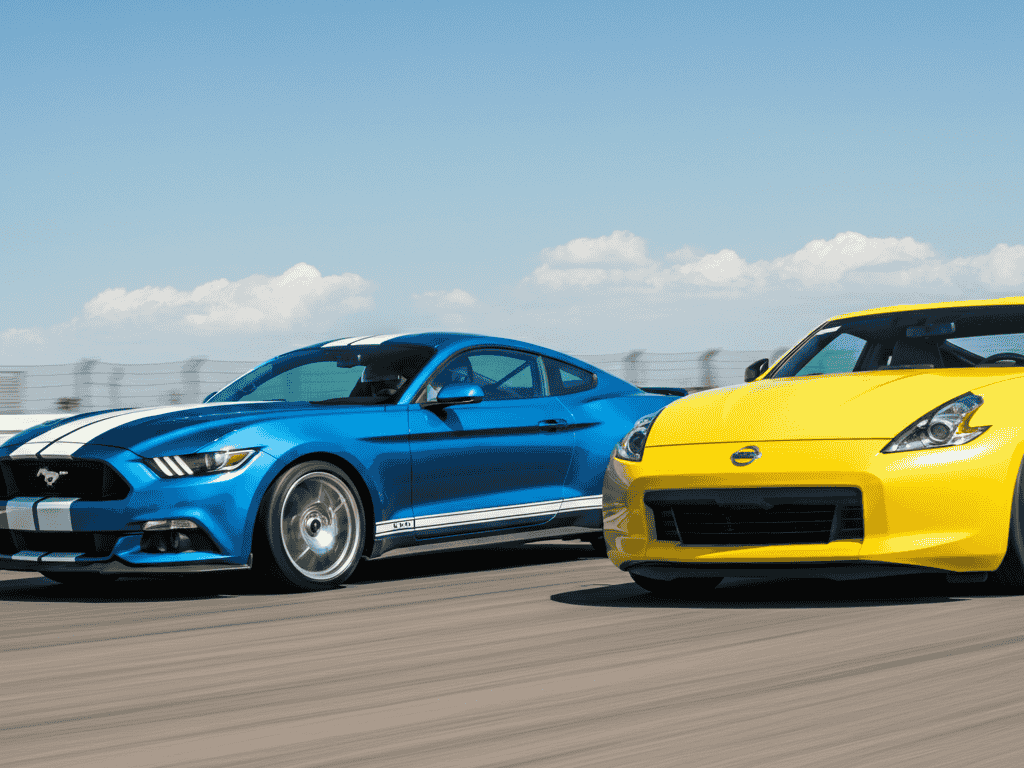
This is where debates get spicy—and where the repeated question “Are Muscle Cars Sports Cars?” makes the most sense.
Mustang (Track Pack / Mach 1 / GTD-style specials): The IRS, MagneRide, aggressive alignment, and track-oriented rubber can make Mustangs that feel like most two-seat sports cars. But competent, unbelievably front-heavy competent.
Camaro SS 1LE / ZL1 1LE: Mythical turn-in bite, the chassis poise, lap-time performance. These trims remove the so-called muscle stereotype on a technical circuit.
Dodge Challenger (Widebody, Jailbreak, etc.): Normally heavier and of grand-touring nature, although with the right tune, it can still catch you unawares during track adventures- but again, it is not that actual hardcore sports car, it is a muscle/grand-tourer.
On the JDM benchmark scale, the cars, in their most track-centric trims, particularly achieve objective performance thresholds that compare to those of the so-called blue-blood sports cars. However, it is culturally and packaged (2+2 coupe, greater footprint, high-torque V8 character) to continue to operate within the muscle/pony context.
JDM Benchmarks: It Feels Different at the Bar
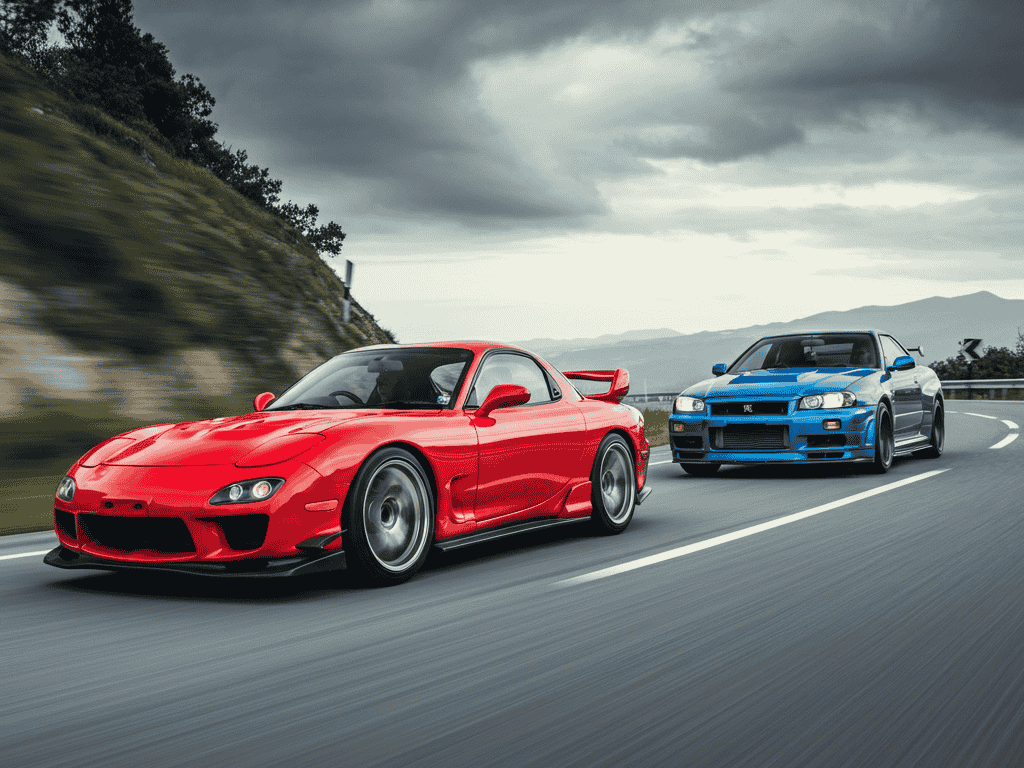
Put the discussion in the context of JDM touchstones, and the line becomes sharp:
Mazda MX-5 Miata (NA 2 1990 1997 NA 2 1990 1997 NA 2 1990 1997): featherweight, talkative, chassis-balance clinic. It is the Platonic sports car.
Honda S2000: Smoothness, NA 4 cylinder revs to the moon, best I ever shifted, scalpel-like front end. A dynamic standard that all the more sturdy coupes feel inferior to.
Mazda RX-7 FD: Turbo, rotary character, almost telepathic steering, and a chassis that can be driven with finesse.
Nissan Z (old and new): GT rather than a Miata, but done correctly, a sports car with kick.
GT-R (R32- R35): Its gross is beyond the bounds of the sports-car scale, though its handling is astonishingly easy through wizardry in the driveline and chassis. It shows that weight is not the only way to the finish line as long as the other parts of the system are unified.
From this JDM vantage point, the answer to “Are Muscle Cars Sports Cars?” is: usually no, because mass and packaging show up in transitions, brake zones, and quick left-right flicks. But the finest new-age American coupe has roughly bridged the dynamic divide to such a point that, in lap times and self-confidence, these coupes cannot be denied to be truly playing the same game.
It-Measuring Perfection: Effective Checklist
In case you want to typify a particular trim without thinking of the badge, rate it on the following five categories (0 to 10 points each):
- Mass & Balance
- Below ~1,500kg, and around 50:50? +2 to +4.
- >1,700 kg including front bias? -2 to -4.
- Chassis Fidelity
- Stiff shell, low cowl shake, decent NVH management on track? +0 to +3.
- Steering & Brake endurance
- Good on-center linear steering; during 20-minute sessions, brakes with admirable lack of fade? +0 to +3.
- Suspension Geometry & Tires
- Properly done DW/multilink; what about square tires with good compounds? +0 to +3.
- Delivery & Gear Ratios Power
- Close ratios, predictable, usable torque to help corner exit speed? +0 to +3.
- Interpretation:
- 12-15: Sports-car attitude (irrespective of pedigree).
- 8-11: Sports-GT, or mixed personality (this is the home of many so-called modern muscle trims).
- <7: Typical muscle/GT performance-lots of fun, faster, but not a canyon knife.
Apply such a checklist to a car, such as a Camaro SS 1LE, and you will know why it is admired as a sports car by track rats. Add on a hefty variable suspension base-V8 on all-season tires, and you end up right in the middle of the muscle/GT IM range.
Where the Differences Can Be Shown: Real-World Driving

More minor, tighter switchbacks / touge-style roads: The lighter, shorter, nimble sports car will feel happier changing direction, returning grip, and communicating the slip angles. This is when the vehicles, such as the Miata, GR86, or S2000, feel alive.
Fast corners/ track: Big-power coupes can match them, or even pass, particularly with aero, tire, and braking longevity. This is the place modern muscle specials can excel in, assuming that the heat problem is dealt with.
Drag strips, roll races: The muscle philosophy prevails–torque, gear, traction is what matters.
Ask again: “Are Muscle Cars Sports Cars?” The answer is usually no to a mountain pass. On a large, high-speed circuit using the correct trim, it can appear to be quite yes.
Culture, Insurance and Marketing (Yes, They Matter)
It is tough to get a label that does not sell:
There is the image attached to sports car: nimbleness, clean-cut, craftiness- occasionally, tiny, bare-bones cabins and fittings.
Muscle car has attitude, sound, and straight-line heroics, cabins usually have more roomy and are more daily friendly.
These identities are supported by insurance forms and expectations of the buyers. Where lap records overlap, there is still the market story: coupe and V8 thunder and acres of shoulders? Individuals believe it to be a muscle. Small footprint, low-cowl, driver-centric cockpit? Individuals believe it to be a sports car.
Today Hybrids: Modern “Sport-Muscle” Coupe Development
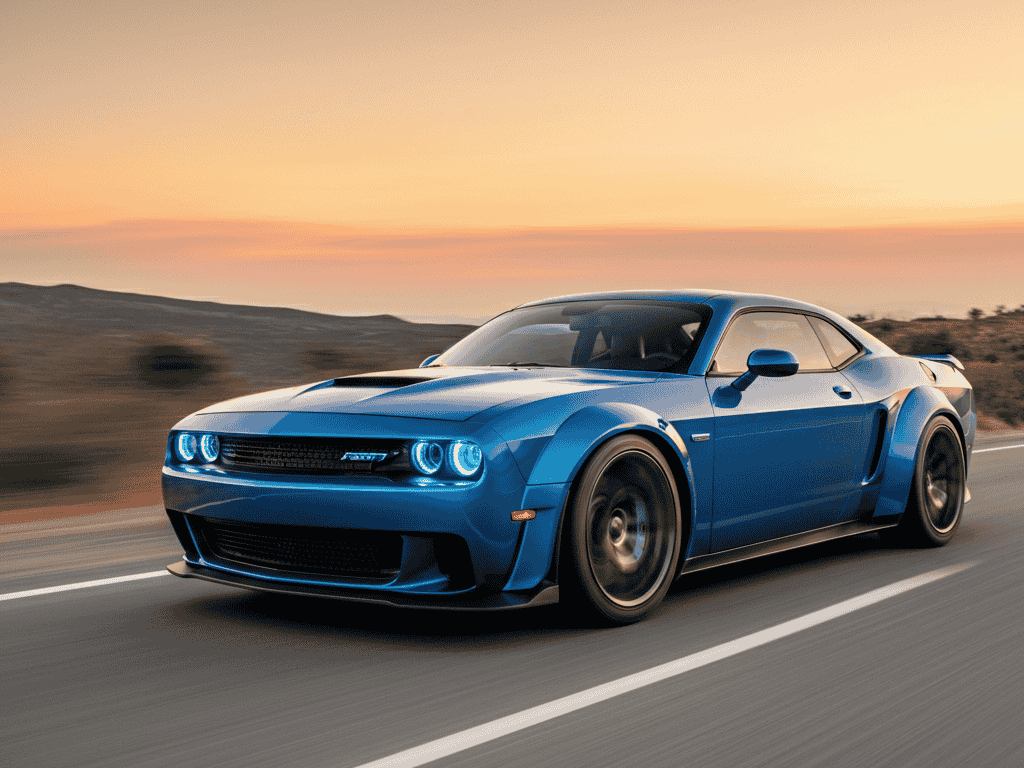
There are chimera builds galore in the industry:
- Aero, track-pack, IRS, 200-treadwear tires, and massive brakes, American coupes have a sports-car feel seasoned with muscle-car charisma.
- Turbo six or V8 GTs with active damping and rear-steer -> sport-GTs that eat miles and apexes.
- High-tech JDM and German machines that are heavier than purists prefer but have otherworldly grip due to engineering → sports machines that number.
- This is why one gets heated debates. Those category lines did not disappear, only intertwined.
- According to the JDM View: The Litmus Test Is Feedback
- The JDM Community will treat Pujjun cars that talk to you:
- Is the steering dead or insulated?
- Do the brakes follow you home in hot weather?
- Are you able to cut your line mid-corner by using throttle and steering- no electronic babysitting gets in the way?
- Does commitment blow away the weight, or does the mass determine the speed?
When those boxes are checked, even a so-called muscle coupe may do the job of a sports car, even though its spec sheet says it is most certainly a torque beast.
Tuning Pathways: Muscle turned to Sport
For owners asking “Are Muscle Cars Sports Cars?” and wanting to nudge their car toward a “yes,” the upgrade trajectory is predictable and proven:
Tires First
A good quality max-performance summer tire (or 200-treadwear track-capable tire) turns transient response, braking, and consistency.
Alignment & Bushings
Additional negative camber, a bit of toe, and stiffer bushings cut slop and tighten feedback.
Coilovers / Dampers & Springs
Quality dampers (or a good valved coilover) fine-tune the body control without murdering compliance.
Brakes
Cooling ducts, high-temp fluid, track-capable pads, and stainless lines resist fade.
Seat & Wheel
Seat support and the correct diameter/thickness of the wheel can improve precision; more matters with a driver interface.
Through those steps, various contemporary American V8 coupes are displaying behavior that purists who were sports car abhorrents two decades ago would have never believed the identical vehicles could have done.
EVs and Chapter Next
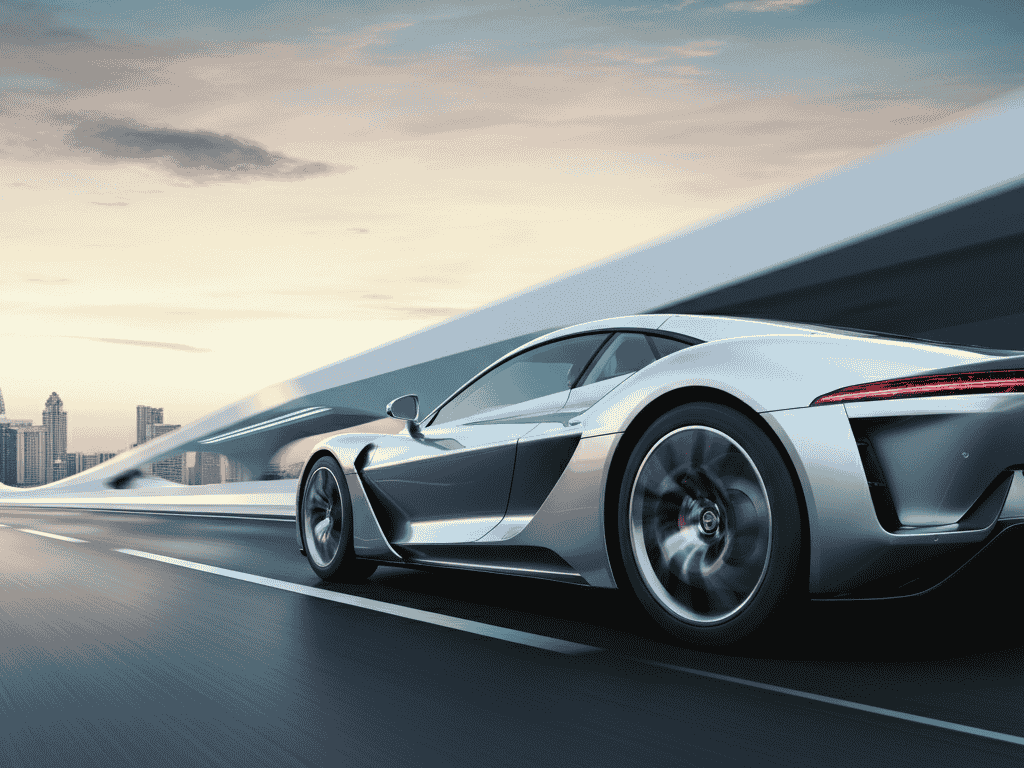
Electrification throws new regulations into confusion:
EVs have muscle-like shove by way of instant torque.
Battery mass complicates the pursuit of the sports-car value of pared-down weight–but floor-mounted packs can help CG.
Torque vectoring has the ability to simulate the handling of a lighter car by power smartly distributed.
The EV era will bring yet more cars that are blisteringly fast in a straight line but surgically sharp in the corners because they are dynamically defined by the software.
The bottom line
So, Are Muscle Cars Sports Cars? The Reality is that they are, but it depends on the Situation. Technically, according to their traditional definitions, they belong to dissimilar categories: sports cars are out to pursue speed and accuracy; muscle cars exude earthquake power and body. But contemporary engineering IRS systems, aero, tire technology, and electronics magic can make a handful of muscle-car badges perform like a true sports-car on the racetrack-focused variants.
When this is assessed by feel, feedback, and stamina over a challenging road or circuit, then the badge is less important than the build. That is a JDM-style answer, but that is the truthful answer as well.
Further Reading (Resources)
What Is a Sports Car? Car and Driver.
What Is a Muscle Car? Hagerty.
These go further into what industry classification entails and the history of how the labels have been developed.
Final Take
Not the category in the head. Use the car in front of you. Balance it, orient it, monitor it, and heed what the chassis tells you. Do that, and you won’t have to keep asking “Are Muscle Cars Sports Cars?”—you’ll know by the first set of corners.

